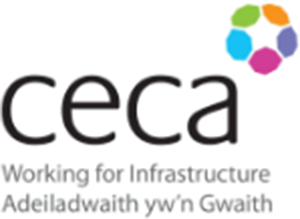As the UK Government considers the findings of Charles Hendry’s review in to tidal power across the UK, and more specifically the need for a pathfinder project in Swansea Bay, Ed Evans, Director of the Civil Engineering Contractors Association (CECA) Cymru, examines how this recommendations from Hendry’s report can open the door to so many opportunities for Wales : its people, its communities, its environment and its future prosperity.
It will come as no surprise, I’m sure, that CECA Wales welcomes the outcomes of the Hendry Review into tidal power in the UK. His recommendations open the door to huge opportunities for Wales’ civil engineering contractors, not just at Swansea but in Cardiff, Newport, Colwyn Bay and at two further sites in England. That’s great news for the Welsh economy, Welsh businesses and Welsh communities. But, of course, it means a lot more than that. This is a potential game changer for Wales. But let’s look at the immediate benefits for the Welsh construction sector first.
For the construction sector it’s excellent news and offers great opportunities for Welsh-based civil engineering contractors, large and small, to develop their businesses, to secure and extend their workforce and to upskill a whole generation of people through a revolution in training and developing programmes across our communities. CITB Cymru estimates that we will need over 3,000 people per annum to deliver this project at Swansea and whilst this is certainly a challenge in terms of recruitment and training it offers great opportunities to break the cycle of deprivation faced by so many of our communities. The jobs needed for this exciting programme are high value, long term jobs that could not only transform the Welsh economy but breathe prosperity into those communities that are in greatest need of regeneration. We know that every £1 spent on infrastructure projects directly boosts GDP by £1.30 with knock on effects increasing this to £2.84 per pound spent. So, a £1.3bn investment in a tidal lagoon in Swansea can generate almost £4bn in value for local communities and that’s before we even consider the broader, long term economic benefits. The multiplier effect is enormous! Once the core industries needed to develop the turbines, which TPL have committed to developing in Wales, are established, high value and high skilled jobs will be based in Wales to continue to supply the demand created by future lagoons. And, of course, these are exportable skills which can help Wales become global specialists in these areas. But if we are to take full advantage of these opportunities, preparatory work needs to be happening now to ensure that the significant numbers of highly skilled workers needed are available in Wales, and stay in Wales.
And that’s just for starters. When we consider the broader and longer term benefits for Wales as a whole the case becomes even more compelling.
If we are to develop our economy and become more prosperous then we need a clear strategy of how we are to achieve this. Whilst we already have a number of sectors which are essential to our foundation economy, if we are to move on we need to identify new and emerging growth areas. The renewables sector could be one of those sectors and this project could place Wales firmly at the fore front of global technological development in this sector. It gives us the opportunity to develop a new and exportable industry utilising the skills that we know already exist in Wales and, fortunately, the Swansea area is well served by a multitude of further and higher education establishments which can churn out the skilled people needed as well as creating a hub for research and development. It enables us to harness the natural tidal resource that we have in abundance. It will reduce our reliance on fossil fuels and reduce our carbon footprint. That makes us more resilient. And it will, undoubtedly, contribute to increasing our prosperity as a nation. All these factors demonstrate our commitment to the wellbeing of future generations and the goals of the Act.
So how do we realise these opportunities? This report by Charles Hendry is an important step forward but we know it isn’t the end of the story by any means. This pathfinder project at Swansea still faces some major challenges, not least the need for a Marine Licence from Natural Resources Wales. Expectations are high and there will be considerable pressure on NRW to respond positively. Clearly, they need to consider the ecological issues carefully and impartially. The impacts on migratory fish, salmon and sewin in particular, are a significant risk which will need to be carefully assessed. We must hope that NRW are able to take a balanced view considering the impacts and benefits in a truly sustainable way and consider the wellbeing of our future generations when coming to a decision.
With a positive response from NRW it’s then over to the UK Government (energy matters of this scale are not devolved to Wales – another debate for another day?) to agree a Contract for Difference (CFD) or “strike price” with the developer. Charles Hendry has already offered a very positive assessment of the economic case in his report comparing the impact on household bills equivalent to the price of a pint of milk per household per annum. Surely a price worth paying? Hopefully this will avoid lengthy and tortuous negotiations over the funding package which will unhelpfully delay this project and do nothing to ease the risks to our future energy supplies.
We shouldn’t underestimate the challenges posed by both these issues but we must overcome them if we are to move on to the all-important construction stage. If and when we get there I’m not sure how politicians will announce this as their usual phrase of “shovels in the ground” is not really appropriate in this instance!
I have no doubt that this is a gamechanger for Wales for a whole host of reasons. We must seize this opportunity and start redefining our economy for the sake of our people, our communities, our environment and our future prosperity.
Maybe the tide is turning in our favour?

